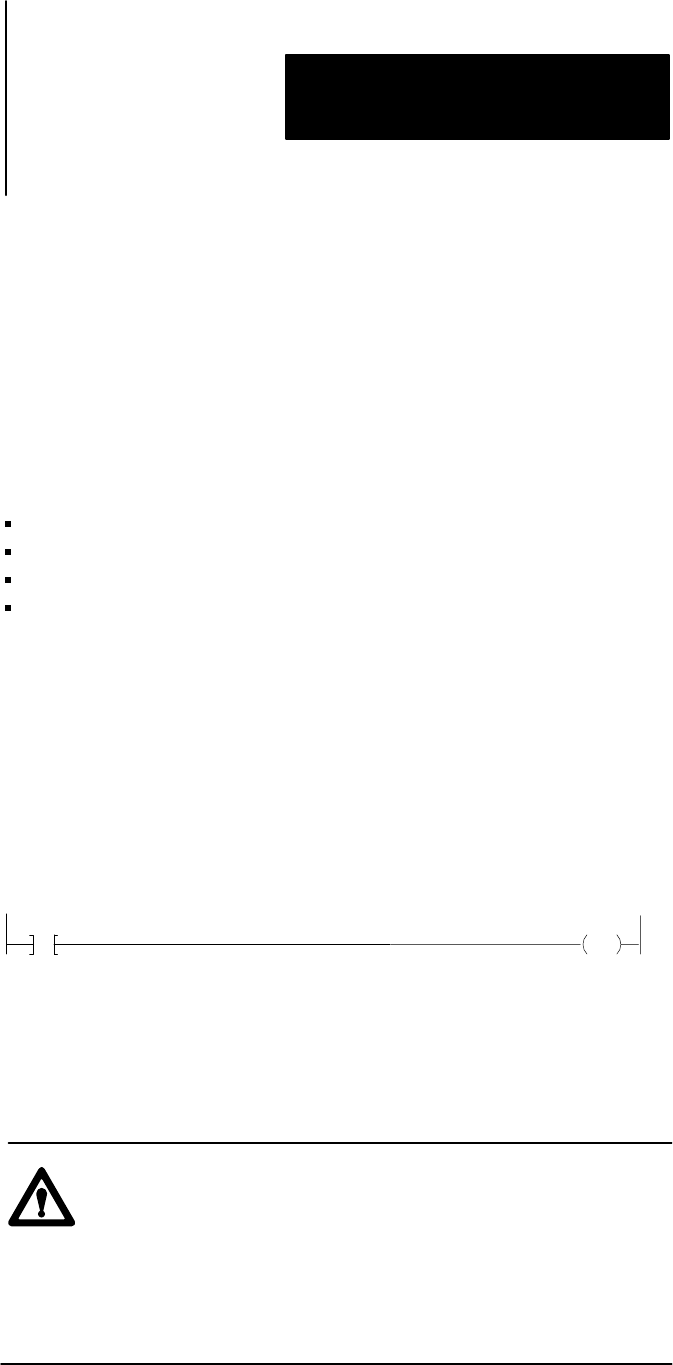User Manual Owner's manual
Table Of Contents
- 1772-6.5.8, Mini-PLC-2/02, -2/16, -2/17 Processor, User Manual
- Important User Information
- Summary of Changes
- Table of Contents
- 1 - Using This Manual
- 2 - Fundamentals of a Programmable Controller
- 3 - Hardware Features
- 4 - Installing Your Programmable Controller
- 5 - Starting Your Processor
- 6 - Maintaining and Troubleshooting Your Processor
- 7 - Memory Organization
- 8 - Scan Theory
- 9 - Relay-Like Instructions
- 10 - Program Control Instructions
- 11 - Timers and Counters
- 12 - Data Manipulation and Compare Instructions
- 13 - Three-Digit Math Instructions
- 14 - EAF Math Instructions
- 15 - EAF Log, Trig, and FIFO Instructions
- 16 - EAF Process Control Instructions
- 17 - Jump Instructions and Subroutines
- 18 - Block Transfer
- 19 - Data Transfer Instructions
- 20 - Bit Shift Registers
- 21 - Sequencers
- 22 - Selectable Timer Interrupts
- 23 - Report Generation
- 24 - Program Editing
- 25 - Programming Techniques
- 26 - Program Troubleshooting
- A - Specifications
- B - Processor Comparison Chart
- C - Number Systems
- D - Glossary
- E - Quick Reference
- Index
- Back Cover

Chapter
17
17-1
Jump Instructions and
Subroutine Programming
This chapter describes the instructions you can use to selectively jump over
portions of a program. The instructions are:
Jump
Jump to Subroutine
Label
Return
This chapter describes how jump instructions and subroutine programming
direct the path of the program scan through the main program and the
subroutine area.
A Jump instruction is an output instruction. It has an identification number
from 00-07. When its rung is true, it instructs the processor to jump
forward in the main program to the Label instruction having the same
identification number. The main program executes from that point.
JMP
01
010
00
You can reduce scan time by selectively jumping over a portion of the
program. Do not program in an area where the Jump instruction crosses
the boundary between the main program and subroutine area, or
vice-versa.
ATTENTION: Allowances should be made for conditions
which could be created by the Jump instruction. Jumped
program rungs are not scanned by the processor. Input
conditions are not examined and outputs that are controlled by
these rungs remain in their last state. Timers and counters cease
to function. Critical rungs should be re-programmed outside of
the jumped section in the program.
Chapter Objectives
Jump










